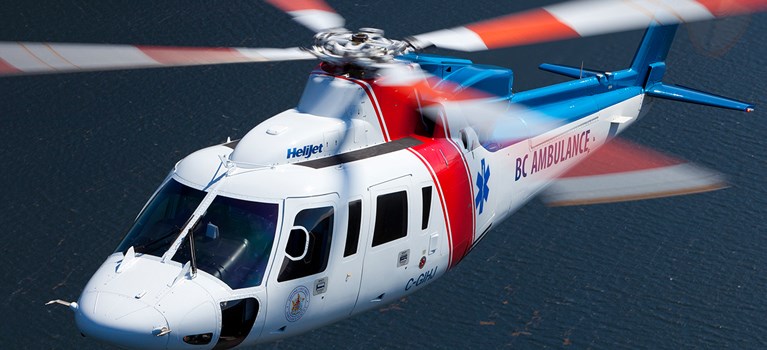B.C.’s air ambulance service provider is scouting out open spaces near Royal Columbian Hospital for its helicopters to land after being barred from landing directly on the New Westminster hospital’s helipad.
On Aug. 12, Transport Canada barred Helijet from landing at seven different hospitals because it found Helijet’s Sikorsky S76 helicopters don’t meet all the standards for landing on certain helipads.
A temporary Transport Canada exemption Friday restored air ambulance service to five of those centres, but flights bound to RCH and Surrey Memorial are still being rerouted to Pitt Meadows or Langley regional airports and patients delivered to those hospitals via ground ambulance.
The reason for the ongoing restriction is that RCH and Surrey Memorial have smaller helipads than the other hospitals, according to Linda Lupini, executive vice-president of B.C. Emergency Health Services.
“The reason is that when the helicopter is over the helipad, they’re not able, in the current situation, because of the size of the helipad, to see the perimeter of the helipad,” Lupini told the Record.
Helijet is requesting an exemption from Transport Canada, she said, arguing the company has been flying successfully in and out of the RCH heliport for years.
Another option for restoring service at Royal Columbian could include Helijet putting smaller aircraft into service.
In the meantime, officials are looking into open spaces near the hospital as a possible short-term fix.
“We have looked at, with Helijet, some of the land around Royal Columbian, and there are some spots that could lend themselves to temporary helipads while this is getting resolved and then we could land much closer to Royal Columbian,” Lupini said.
She couldn’t specify which areas were under consideration but said helicopters could be landing at a temporary helipad near RCH in a matter of weeks if that’s an option officials pursue.
So far, three air ambulance patients have been diverted to Pitt Meadows Regional Airport and driven to RCH via ground ambulance, tacking on 15 to 21 minutes of travel time, according to Lupini.
“The most important time frame is really getting to the patient in the first place, and we’re still able to do that, and we’re able to do that with our most highly trained paramedics,” Lupini said. “That’s on the positive side, but, at the end of the day, we can’t have this situation continue much longer.”

.jpg;w=120;h=80;mode=crop)

